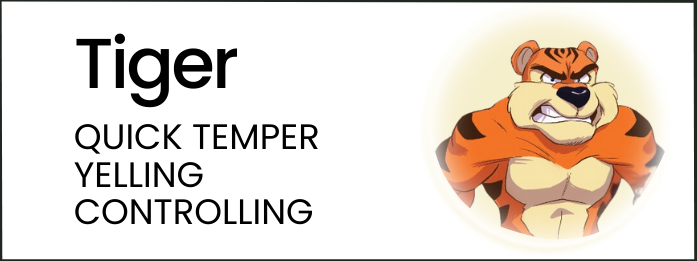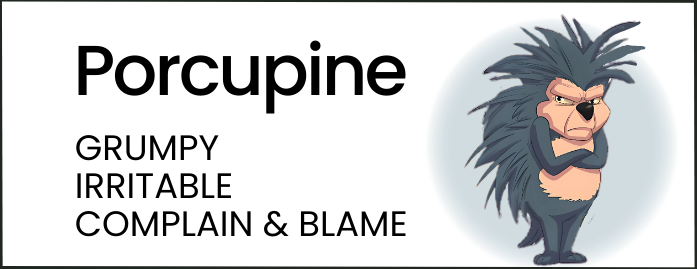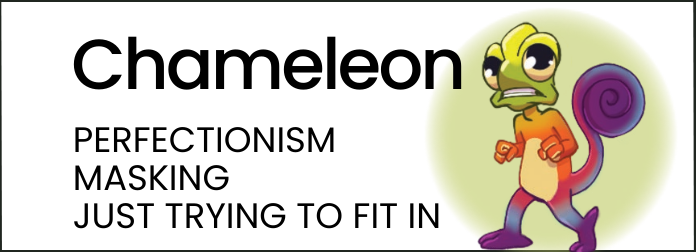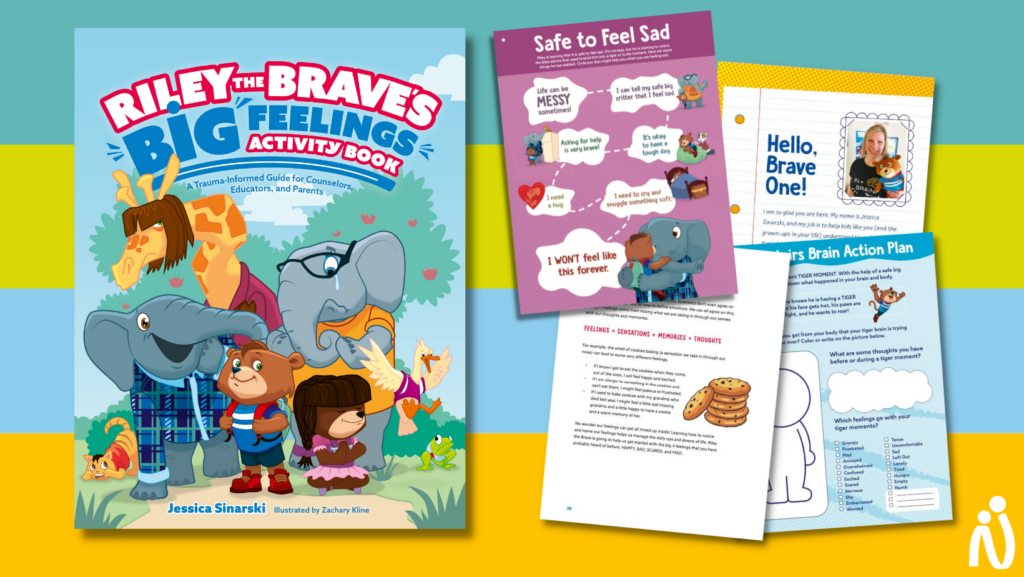A compassionate guide to make sense of hard days
There’s a voice in my head that says, “Be perfect. Do enough. Don’t stand out. Definitely don’t have needs.”
That’s the Chameleon* part of my brain. It’s the Downstairs Brain protector I know best—always trying to help me blend in, keep the peace, fly under the radar. And it’s gotten me through a lot!
But when depression flares, my whole Downstairs Brain joins the party. Suddenly it’s not just Chameleon that needs some TLC—my Tiger, Turtle, and Porcupine protectors kick into action too. It happened to me recently. And it reminded me of how helpful it can be to see brain state behind my thoughts and feelings.

My Tiger Brain tends to pounce inward. It is harsh and shaming: “You’re failing your children,” it tells me. And that’s my tell. When I hear it, I know depression’s in the driver’s seat.
Porcupine shows up prickly and on edge. In a recent bout of the blues, I told my kids, “I’m really grumpy. I need a break.” Porcupine brain was loud, so I was proud of that moment of clarity.

But even after the break, I caught myself correcting my son about something that, if I’m being honest, didn’t need correcting. That wasn’t Upstairs Brain parenting—that was Porcupine mode scanning for danger. I gave myself a re-do: “Wait. Sorry, I think that’s still my Porcupine brain. Can we start over. You’re fine, hon.”

When I’m feeling down, Turtle slides in with a fog of “I. Just. Can’t.” I could see that everything was okay, but I couldn’t feel it. Conversations were hard. Smiling felt fake. Even things I love brought no joy.
And all the while, Chameleon kept whispering…
“Keep it together. Don’t need anything. Just keep going.”

This is how depression showed up for me a few weeks ago. Thankfully, I have a way of understanding it that helped me move through instead of piling more shame and blame onto myself.
Why This Lens Makes More Sense Than CBT (for Me)
I’ve worked with a lot of people with trauma histories who struggle with depression—myself included. When I was in graduate school, the go-to approach was Cognitive Behavioral Therapy (CBT): challenge the thought, reframe the belief, change the feeling. But here’s the thing…
When I’m in a full-body depression spiral, I’m not in a place to cognitively challenge anything.
My nervous system has gone downstairs.
The part of my brain that can analyze, reflect, or reframe just isn’t online. So even if I know the “right thoughts” or the deep belief that is kicking my Downstairs Brain into overdrive, I can’t feel it in the ways that will help me find my way back upstairs.

That’s why this brain-based lens—Tiger, Turtle, Porcupine, Chameleon—has made more sense to me than any CBT worksheet ever did. It helps me recognize what’s happening and respond with compassion.
A First Aid Kit for Dark Days
This isn’t a tidy “I fixed it!” story. Depression isn’t something to conquer—it’s something to move through, one small step at a time. As with all human things, there’s a pattern of steady, unsteady, and steady again.
Here are a few things that helped me get through a rough week recently. I offer it here as a first aid kit. Grab what you need the next time your Downstairs Brain gets loud.
- Prioritize Rest
I got to bed earlier than usual and napped when I could. My body needed more fuel. - Let Some Things Go
Chores didn’t get done, and that was okay. - Say It Out Loud
Saying “I’m grumpy” and stepping away helped interrupt the spiral. - Make Meals Easier
Frozen soup. Takeout. Cereal for dinner. No guilt. - Move At Least a Little Bit
A little yoga was all I had in me—but it helped. - Reach Out
I shared what I was feeling with a trusted friend, even though my Chameleon didn’t want me to. I also decided to find a therapist. It’s been a while. There’s a lot going on, and I could use a little more support. - Use Your Tools
I’ve been enjoying the Finch app lately, so I used it to set reminders of things that I know help. I also made sure I was taking my meds every day. (I don’t talk about medication often because I know it can be overused—especially in settings short on trust-building and safety—but Zoloft has been one of my depression supports for many, many years.) - Take a moment for gentle reflection
- Which protector is most active right now?
- What might it be trying to shield me from?
- What’s one small act of care I can offer myself today?
You Are Not Broken
If any of this sounds familiar, you’re not alone.
Depression distorts reality. These protectors are just trying to help, but they get stuck. I’m hoping the ideas above can help you get unstuck…one compassionate step at a time.
Looking to help kids take a compassionate (and proactive) look at big feelings? That’s why I wrote Riley the Brave’s Big Feelings Activity Book. Fun Fact: You might enjoy it even as an adult. It was written for kids, but the tools can be helpful for any brain that’s been through hard things.

One Last Thing…
You don’t need to have it all figured out.
Save this post.
Share it with someone who might need it.
We need each other…even when that extra-protective Downstairs Brain tells us we don’t.

* If you’re new to the idea of brain protectors like Tiger, Turtle, and Chameleon, Your Amazing Brain: The Epic Illustrated Guide is a great place to start. It breaks complex brain science into easy-to-understand metaphors and visuals for ages 7 and up.